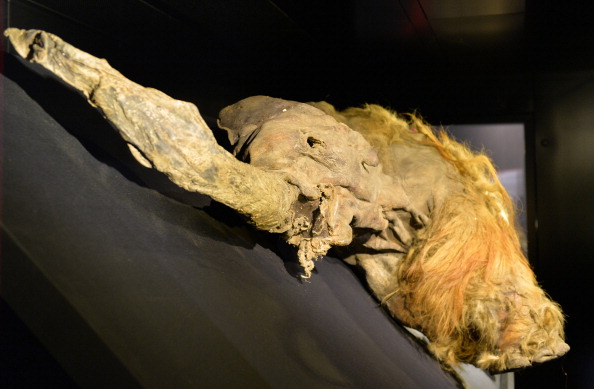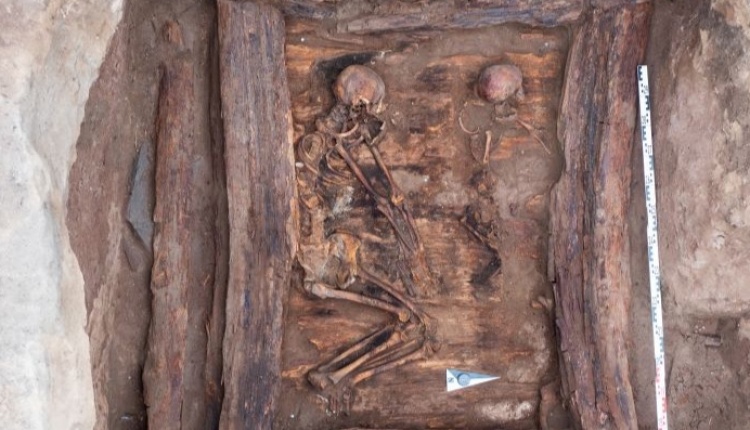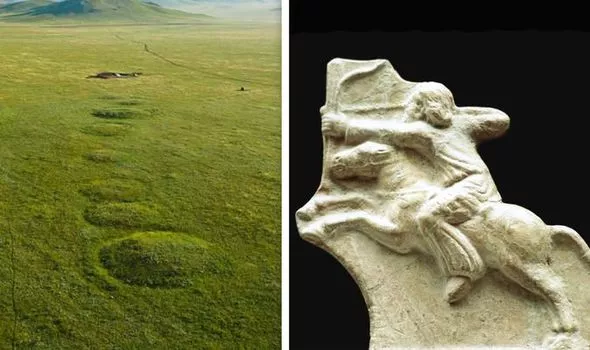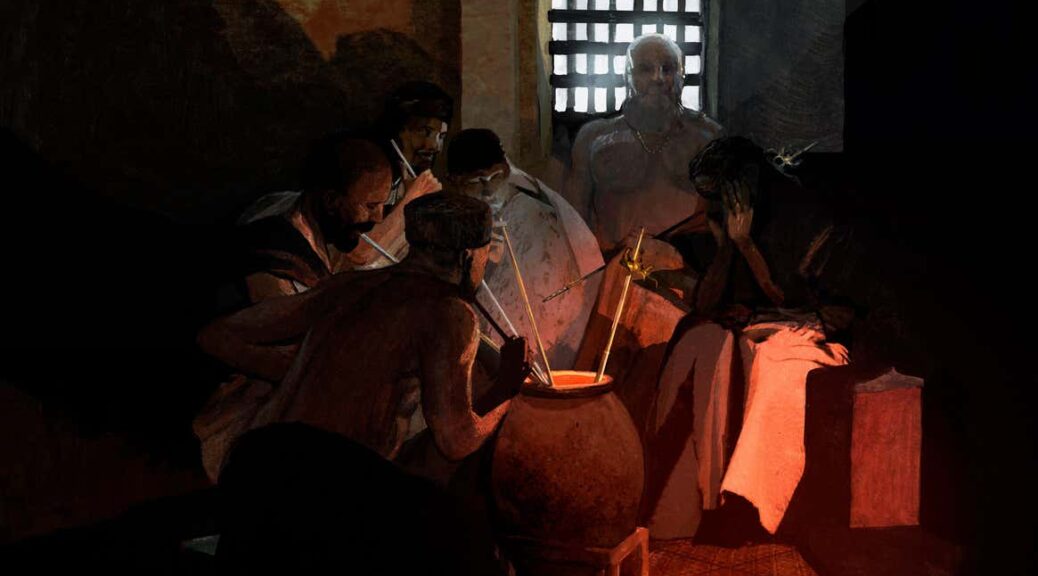A Message From a Mysterious Ancient Culture in Siberia
On the right bank of the Askiz river, a unique archaeological site from the early first millennium C.E. has been found. It is associated with the enigmatic Tashtyk culture in ancient Siberia and for a change, it sheds light not only on how they died, but who they were.
The Tashtyks’ unusual funerary practices had already been described in numerous articles and research but we know little about how they lived before the evil day. Now at the new site dubbed Kazanovka 14, archaeologists have gained rare insight into their culture, their adaptations to the environment and their relationships in this “oasis” in southern Siberia.
The Askiz is a tributary of the Abakan River. It passes through the balmy Minusinsk Basin in the southern Siberian republic of Khakassia, where the previously unknown site was found during the field season of 2021.
The Minusinsk Basin is a territory bordered by mountains and forests, with abundant lakes, fertile land and the mildest climate in Siberia. One might call it an oasis of the steppe. The winter winds blow the snow away from the mountains, making the area a perfect place to keep sheep, who can roam freely. It is therefore little wonder that the Minusinsk hollow attracted semi-nomadic tribes and their flocks throughout history. Archaeologists over the years have uncovered sites of a number of cultures from the third millennia B.C.E. onward.
While performing construction works along the Mezhdurechensk–Tayshet railroad from 2019 to 2021, various sites from the Early Bronze Age to the later Middle Ages were discovered. These included burials of many cultures and settlements. One of the sites, called “Kazanovka 14,” was excavated in 2021.
The salvage excavation of Kazanovka 14 was carried out by Anton Vybornov of the Institute of Archaeology and Ethnography SB RAS Novosibirsk, Russia, under the leadership of Timoshenko Alexey. It was here that the scholars found new evidence of how the Tashtyks lived their life, after finding the remains of a burned-down wooden structure, and a remarkable petroglyph – an engraved sandstone slab.


Their discoveries were reported in the journal of Problems of Archaeology, Ethnography, Anthropology of Siberia and Neighboring Territories. As Anton Vybornov told Haaretz, Kazanovka 14 was a Tashtyk seasonal camp, as indicated by characteristic finds known from the vast majority of burial grounds of which this “culture” is famous.
A little bit Scythian
The Tashtyk culture was common in the Khakassian Minusink basin, in southern Siberia, from almost 2,000 to about 1,600 years ago. But the culture is not easy to define, Vybornov says. In some ways, they seem to have carried on some Scythian traditions. In other ways, they evince Hunnic – Sarmatian types of cultures, mixed with local traditions known in the Basin. The Tashtyk culture is also considered to be a local southern Siberian phenomenon on which basis the later medieval Yenisei Kirgizian state would arise.

One thing we can be sure about is their idiosyncratic and colourful burial practices.
Tashtyk funerary practices involved either cremation or inhumation. The remains were buried either in box graves dug into the ground and lined by wood, or massive crypt burial mounds. The ash and cremated bones were put inside a leather bag that was then stuffed with dry grass. The bag was arranged inside a leather-dressed dummy, and a mask was placed on the area of the face.
In the case of Inhumation, which was also common, the deceased was dressed in leather. Their heads were wrapped with shrouds, orin any case a cloth tissue, and a mask was placed on top.


The masks were the most extraordinary feature of these burials. They were essentially portraits of the dead made using clay and plaster and embellished with red paint. On the forehead, a spiral was drawn, and the cheeks and chin were blushed with the paint as well.
Once the dummies or bodies had been prepared, they were placed in box graves or crypts, among grave goods, including pottery and metal vessels. The crypts were big, with a corridor leading inside. When its mortuary duty was finished, the crypt was sealed, burned, and covered, to stand for eternity overlooking the Basin. While we can say plenty about their way of death, as revealed by the abundance of Tashtyk burial sites and practices, we cannot say much about their way of life. Barely any Tashtyk settlements have been found, hence the importance of Kazanovka 14.
Just below the surface, three to 20 centimetres below the modern deposits, the archaeologists unearthed what seems to have been a seasonal campsite of this semi-nomads, who moved from winter to summer camps and practised farming throughout the years in this fertile land. In the southern part of the camp, they found a charred destruction layer that they believe came from a collapsed structure built of wooden sticks attached horizontally or vertically together. The excavators also detected holes in the ground in the area of the structure, indicating the placement of wooden posts that supported the walls and/or the ceiling.

There was also a hearth, and together with pottery vessels, bone and metal objects, and animal remains, there were several spots of burnt clay accumulations. This leads Anton to surmise that the structure might have been a potter’s workshop, a possibility worth considering even though the research is still basic and further analysis is required. Alternatively, the structure could have been a simple house, a hut, or even a yurt. It seems the site ceased to exist when the fire consumed the wooden structure and what was within, sealing the place for good – until it was uncovered by the expedition in 2021.
Kazanovka 14 not only sheds light on the Tashtyk way of life. It also opens a window to their artistic world and their perception of themselves and their surroundings. The fire might have burned down their house, but signs of the Tashtyks’ artistic spirit survived the conflagration long after their death. Among the ash and debris, the archaeologists found astragalus bones, which are animal ankle bones, with marks incised on them, including crosses, circles, and lines. These are familiar from other sites and might have been used as game pieces. A sense of spaceBut the most exciting discovery of the season was the engraved sandstone slab.



The depictions on the sandstone are divided into three panels. The lower has what seemed to be a stylistic representation of trees. The upper features three horizontal lines with smaller stripes in between. The middle panel was bordered by three vertical lines on each side with stripes in between, similar to the upper panel.
The panel’s centre is oddly empty, with some elements on the side and a semicircle in the middle. Despite its cryptic nature, Vybornov and his team were extremely excited by the find, a whisper left behind by these enigmatic people about themselves and their world, an unintentional message from the past. Learning about the finds and the burnt structure found in Kazanovka 14, and the petroglyphs on the slab, one wonders if it might show that very structure.
When asked about it, Vybornov said that it had been his first thought as well, but at this stage that remains pure speculation. Only further research and analysis of the material, and correlation to old and new finds hopefully to be made, can unveil what the message the Tashtykians wanted to deliver actually was.


























